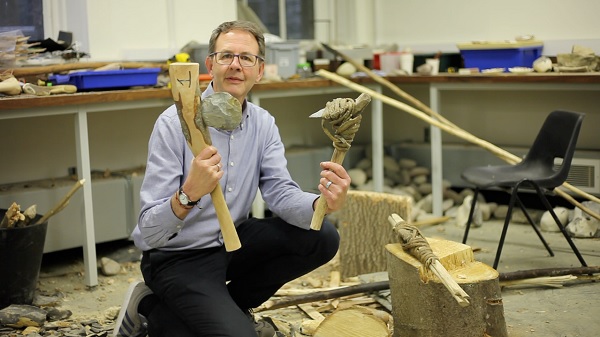
Professor Larry Barham of the University of Liverpool's Department of Archaeology, Classics and Egyptology explains how the use of experimental archaeology can be used to uncover the history of hafting, which gave rise to the combinatorial technology we rely on today.
My research looks at the development of hafting which is both an idea and a way of making things.
Hafting means combining two or more objects to make a tool and this idea underpins everything we make today. From pen and paper to smartphones, we are surrounded by objects made by machines, and machines are tools made from multiple parts.
There was a time in the past before hafting when tools were single objects held in the hand.
I want to know when hafting was invented, where, and why? What did it require in terms of knowledge of materials; did it involve extended planning and learning from others?
These are basic questions involving input from researchers in archaeology, geography, anthropology and psychology.
Experimental archaeology is especially important for us at Liverpool as it enables us to understand how effective early hafted tools were for cutting, chopping, scraping and piercing – everyday tasks in the past and present. This knowledge feeds into the question of why hafting may have been invented.
Discover more
Study with the Department of Archaeology, Classics and Egyptology